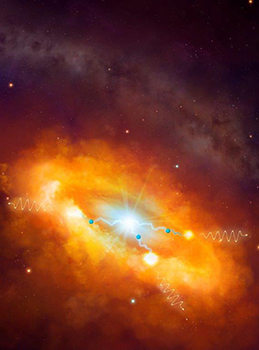Latest News Archive
Please select Category, Year, and then Month to display items
31 October 2023
|
Story Mosa Mofokeng
![]()
To inform, inspire, motivate, and connect!
These are the outcomes that the UFS Department of Alumni Relations wants to achieve through its Alumni Career Connect engagement series.
The series connects pre-alumni with leading alumni who have experience as leaders in various careers, entrepreneurship, personal and professional success.
The content and themes further aim to prepare pre-alumni for the world of work and life beyond graduation.
Dr Roy Jankielsohn is the Leader of the Official Opposition in the Free State Legislature and the DA Free State Provincial Leader. Formerly a Lecturer in the Department of Political Science at UFS (1995-2000), he was a Member of Parliament (2000-2006) during which he served as the DA’s Spokesperson on Defence and Safety and Security (Policing).
Join us as we experience Dr Jankielsohn’s personal and professional success.
Date: Thursday, 09 November 2023
Time: 12:00 to 13:00
Venue: Multilingualism Building (Bloemfontein Campus) and Senate Hall (Qwaqwa Campus)
Two scientists part of team that discovers the source of the highest energy cosmic rays at the centre of the Milky Way
2016-03-22

Artist's impression of the giant molecular clouds surrounding the Galactic Centre, bombarded by very high energy protons accelerated in the vicinity of the central black hole and subsequently shining in gamma rays.
Artist's impression: © Dr Mark A. Garlick/ H.E.S.S. Collaboration Spotlight photo:
Dr Brian van Soelen and Prof Pieter Meintjes of the UFS Department of Physics.
Photo: Charl Devenish
|
H.E.S.S. (High Energy Stereoscopic System) scientists publically revealed their latest galactic discovery in the international science journal, Nature, on 16 March 2016. These scientists were able to pinpoint the most powerful source of cosmic radiation – which, up to now, remained a mystery.
Part of this team of scientists are Prof Pieter Meintjes and Dr Brian van Soelen, both in the University of the Free State (UFS) Department of Physics. Dr Van Soelen explains that they have discovered a proton PeVatron – a source that can accelerate protons up to energies of ~1 PeV (10^15 eV) – at the centre of the Milky Way. The supermassive black hole called Sagittarius A has been identified as the most plausible source of this unprecedented acceleration of protons.
The protons are accelerated to Very High Energy (VHE) gamma rays. The energy of these protons are 100 times larger than those achieved by the Large Hadron Collider at CERN (the European Organization for Nuclear Research).
According to Dr Van Soelen, the fact that this research has been published in Nature demonstrates the importance and pioneering nature of the research conducted by H.E.S.S. The H.E.S.S. observatory – operational in Namibia – is a collaboration between 42 scientific institutions in 12 countries.
In 2006, H.E.S.S. was awarded the Descartes Prize of the European Commission – the highest recognition for collaborative research – and in 2010 the prestigious Rossi Prize of the American Astronomical Society. The extent of the observatory’s significance places it among the ranks of the Hubble Space Telescope and the telescopes of the European Southern Observatory in Chile.
“The next generation VHE gamma-ray telescope,” Dr Van Soelen says, “will be the Cherenkov Telescope Array (CTA), which is currently in the design and development stage.” Both Dr Van Soelen and Prof Meintjes are part of this project as well.
H.E.S.S. has issued a complete statement about the paper published in Nature.